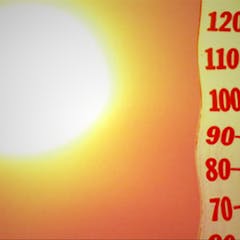
Articles on Meteorology
Displaying 1 - 20 of 124 articles

Flash floods are getting more common, as warmer air can hold more moisture. But there are other changes leading to more inland flooding on the east coast.

Ghana is experiencing record high temperatures and rainfall patterns have become inconsistent.

Is there really a secret continent to Australia’s north? Not quite. The Maritime Continent is a region where hot seas and islands shape the world’s climate.

A new study shows how often lightning strikes and how it behaves, often hitting the ground with multiple strikes from the same flash.

We crave certainty in our weather forecasts. But that’s only possible for big weather events such as cyclones and major storms. Everything else is probability.

The forest fires of the summer of 2023 in Québec were devastating. It was the worst year in 50 years. But with climate change, the worst may be yet to come.

Storm Ciarán unleashed extremely strong and destructive winds in parts of the southern UK and northern France – here’s why.

Storm Ciarán is the UK’s third named winter storm since September.

More than 800 lives were lost in the Royal Charter storm but it also led to improvements in weather forecasting.

An ‘omega block’ helped Storm Daniel wreak devastation in Libya.

Europe is gripped by a heatwave called Cerberus - it may be a sign of things to come.

The last time England was this hot in June a young Queen Victoria sat on the throne.

Temperatures plummeted across southeast Australia this week, with Canberra experiencing its lowest temperature since 2018 and the lowest for June since 1986. What’s going on?

The official forecast calls for a strong El Niño by winter, but other models suggest it might dip in and out. An atmospheric scientist explains.

Heatwaves are often the result of these bursts of warm, southerly air.

If greenhouse gas emissions continue at a high rate, breadbaskets of Europe and North America will see a 50% chance of a flash drought each year by the end of this century.

March 2023 was the wettest for 40 years in England and Wales.

North America’s boreal forests have been burning a lot, probably more and more over the past 60 years. Yet the long-term trend indicates that they are burning less than they were 150 years ago.

Do record-breaking wind speeds mean a particularly catastrophic storm? Not always – and it can be tricky to get precise measurements.

An expert explains why the UK’s winter has been relatively calm.
